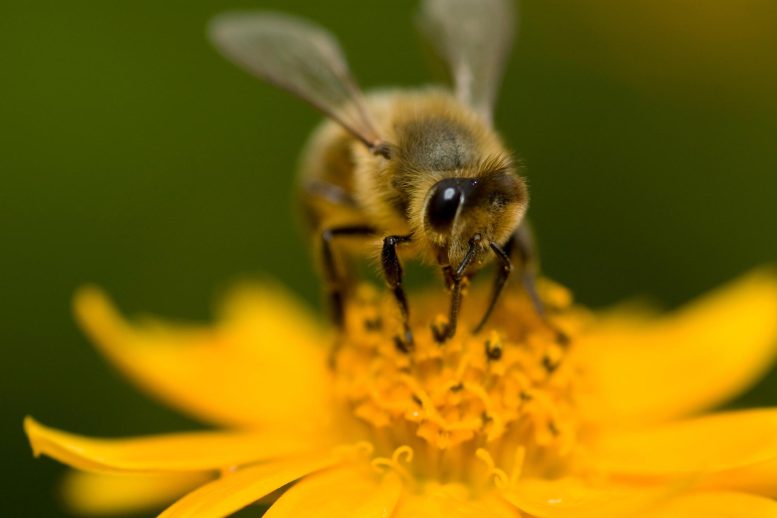
Researchers found that honey bee disease patterns in the UK are strongly influenced by weather.
Honey bee colonies worldwide have suffered from a range of damaging diseases. A new study has provided clues on how changing weather patterns might be driving disease in UK colonies.
Publishing their findings in the journal Scientific Reports, the team led by Newcastle University found that the most severe disease of honey bees, caused by the Varroa mite, increased as climate temperatures increased but were reduced during heavy rainfall and wind.
Data collected from visits to over 300,000 honey bee colonies highlighted how the prevalence of six important honey bee diseases interacted in different ways with rainfall, temperature, and wind.
Weather Patterns Drive Contrasting Disease Risks
Study lead, PhD student Ben Rowland, from Newcastle University’s School of Natural and Environmental Sciences, said: “Our analysis clearly shows that the risk of a colony contracting one of the diseases we examined is influenced by the weather conditions experienced by that colony. Our work highlights some interesting contrasts; for example, rainfall can drive one disease to become more common whilst another will become rarer.”
Professor Giles Budge, who leads the Modelling Evidence and Policy Group at Newcastle University and was a senior author on the paper, said: “We have long known that weather can influence the ability of honey bees to leave the hive and forage for food, but to better understand how our climate can influence honey bee disease is fascinating! This new knowledge will help us predict how honey bee disease might be influenced by future climate change.”
The study also investigated the effect of weather on disease hotspots. The South West of England was at increased risk of disease caused by Varroa mites. In addition, the team highlighted a hot spot for risk for the notifiable and damaging disease European foulbrood in an area comprising Powys, Shropshire, Herefordshire and Worcestershire.
Reference: “Identifying the climatic drivers of honey bee (Apis mellifera) disease in England and Wales” by Ben Rowland, Steve P. Rushton, Mark D.F. Shirley, Mike A. Brown and Giles E. Budge, 9 November 2021, Scientific Reports.
DOI: 10.1038/s41598-021-01495-w
This work is being completed with funding from Bee Disease Insurance Ltd and the BBSRC.
Never miss a breakthrough: Join the SciTechDaily newsletter.
2 Comments
Varroa mite infestations occur in a wide range of temperatures from the torrid Sonora Desert to the foggy islands of good old England. The temperature range is far greater than the claimed increase in average global temperatures over the last century!
What role might a lack of genetic diversity, or unnaturally high population density of pollinators play in a susceptibility to diseases?
Agree with Mr. Spencer’s point that other variables could be at play. With regard to honey bees, a large apiary in an area would favor transmission of mites and the viruses they vector on the flowers that bees from different hives visit. Also, actions by the beekeeper may matter. Robbing screens, for instance, would be expected to reduce exposure of colonies to one another and thereby disease transmission. Another environmental factor would be human land use. If a sunflower field is converted to a housing development, not only nectar and pollen but a potential source of medicaments for honey bees as well as wild bees would be removed from the environment. A look at the bigger picture here is important.